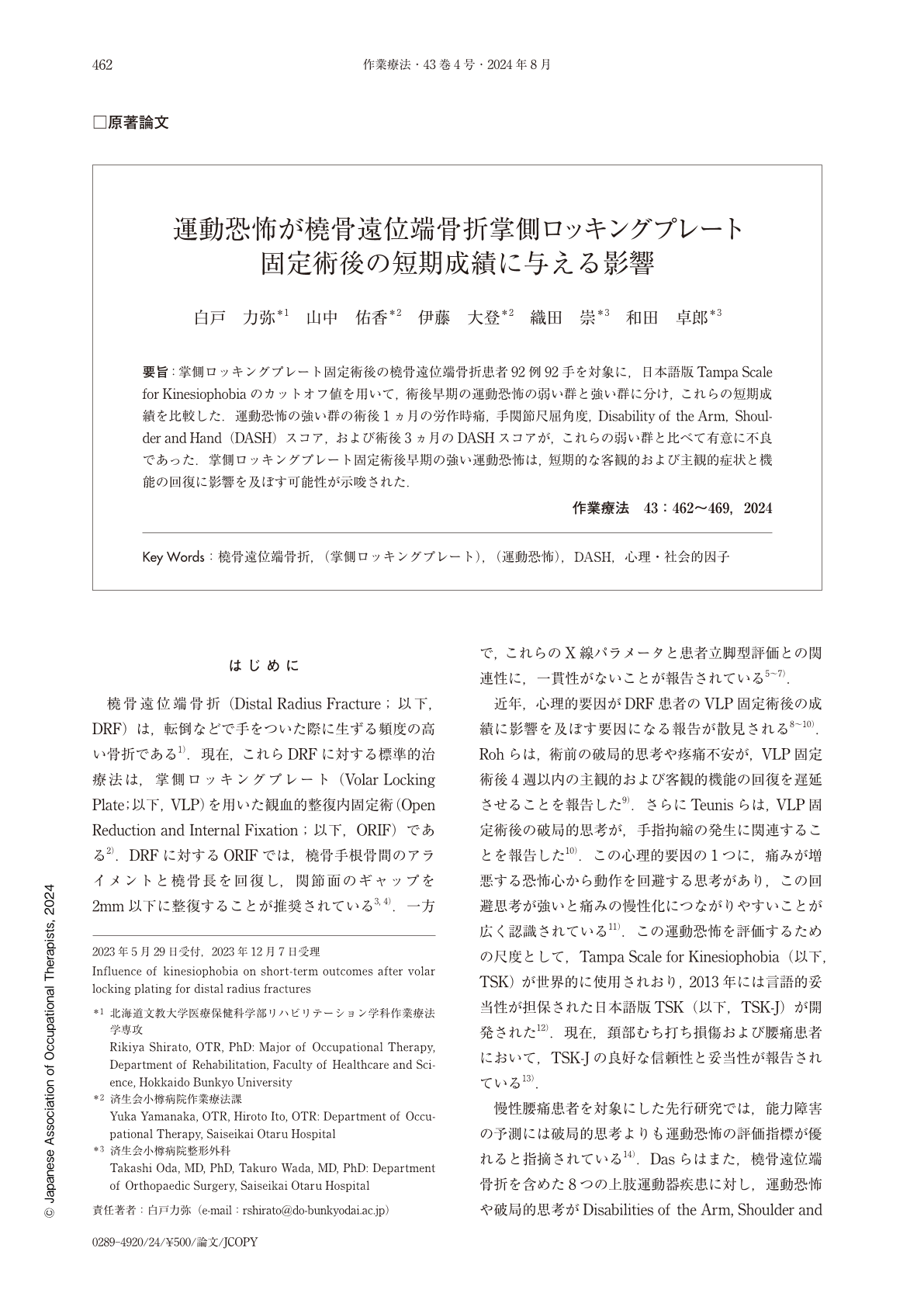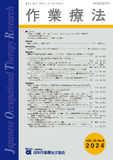Japanese
English
- 販売していません
- Abstract 文献概要
- 1ページ目 Look Inside
- 参考文献 Reference
要旨:掌側ロッキングプレート固定術後の橈骨遠位端骨折患者92例92手を対象に,日本語版Tampa Scale for Kinesiophobiaのカットオフ値を用いて,術後早期の運動恐怖の弱い群と強い群に分け,これらの短期成績を比較した.運動恐怖の強い群の術後1ヵ月の労作時痛,手関節尺屈角度,Disability of the Arm,Shoulder and Hand(DASH)スコア,および術後3ヵ月のDASHスコアが,これらの弱い群と比べて有意に不良であった.掌側ロッキングプレート固定術後早期の強い運動恐怖は,短期的な客観的および主観的症状と機能の回復に影響を及ぼす可能性が示唆された.
Ninety-two patients (92 hands) with distal radius fractures after volar locking plating (VLP) were divided into two groups: those with a low degree and those with a high degree of fear of movement (FOM) using the cutoff values of the Japanese version of the Tampa Scale for Kinesiophobia in the early postoperative period; the short-term outcomes between the two groups were compared. Pain during activity, wrist ulnar deviation angle and Disability of the Arm, Shoulder and Hand (DASH) scores at 1 month and 3 months postoperatively were significantly worse in the patients in the high FOM group than in those in the low FOM group. A high FOM in the early postoperative period after VLP for distal radius fracture may affect short-term objectives and subjective symptoms, as well as functional recovery.

Copyright © 2024, Japanese Association of Occupational Therapists. All rights reserved.


